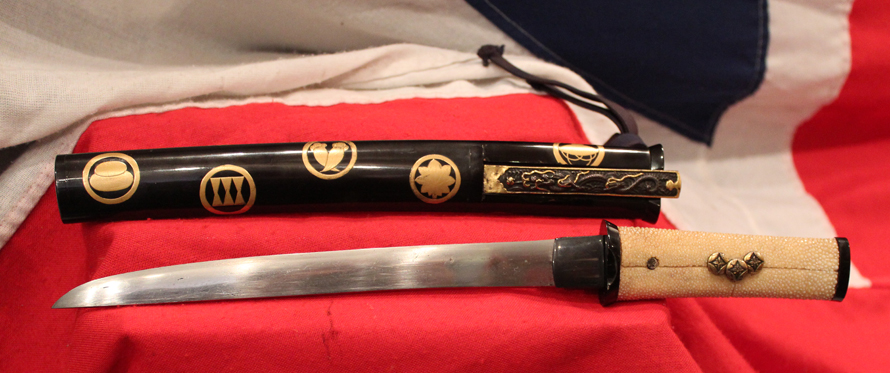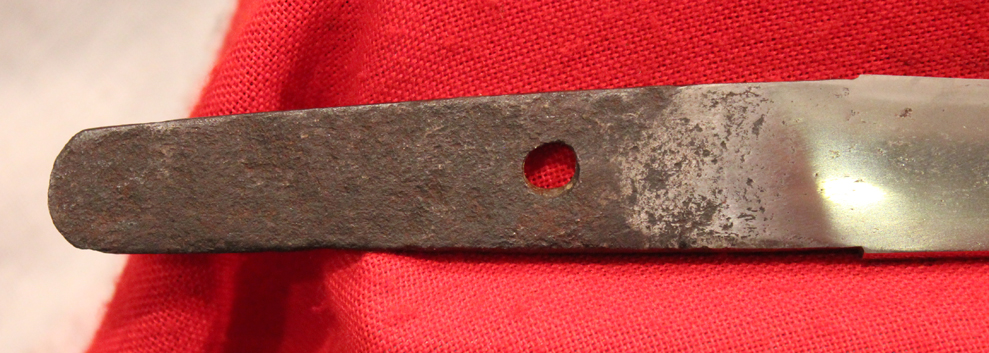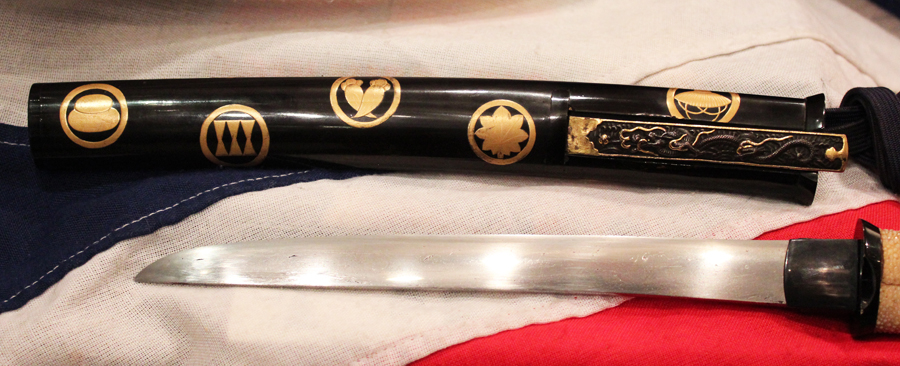A Most Beautiful Masterpiece of Original Samurai Artistry, A Stunning Clan Mon {Family Crests} Koshirae Decorated Tanto, Between 600 to 700 Years Old
Possibly mounted to display all the affiliated samurai clans of one particular family. An extraordinary ancient piece of signal quality. Obviously the possession of a samurai of high rank and status within the clan. All original, superb quality Edo fittings and mounts. Gold embellished dragon design, and signed, kozuka utility knife. The blade is Nambokochu era, and is in super polish with a typical thin suguha hamon of the period. Giant ray skin covered hilt with three clan mon menuki covered in pure in gold. Carved buffallo horn kashira and saya mounts. One patron mon will likely be the dominant mon and the others from conjoined allied clans, through marriage, and subserviant retainer families. Mon may have originated as fabric patterns to be used on clothes in order to distinguish individuals or signify membership of a specific clan or organization. But by twelfth century Japan, sources give a clear indication that heraldry had been implemented as a distinguishing feature, especially for use in battle. It is seen on flags, tents, weapons armour, and equipment.
Like European heraldry, mon were used on the battlefield and mon served as army standards, even though this usage was not universal and uniquely designed army standards were just as common as mon-based standards ( sashimono, uma-jirushi).
Japanese traditional formal attire generally displays the mon of the wearer.
Rules regulating the choice and use of mon were somewhat limited, though the selection of mon was generally determined by social customs. It was considered improper to use a mon that was known to be held by someone else, and offensive to use a mon that was held by someone of a high rank. When mon came into conflict, the lower-ranked person sometimes changed their mon to avoid offending their superior. The mon held by the ruling clans of Japan, such as Tokugawa's hollyhock mon and the Emperor's chrysanthemum mon, were legally protected from unauthorized usage.
Occasionally, patron clans granted the use of their mon to their retainers as a reward. Similar to the granting of the patron's surnames, this was considered a very high honour. Alternatively, the patron clan may have added elements of its mon to that of its retainer, or choose a completely different mon for them.
Code: 20153
Price
on
Request









